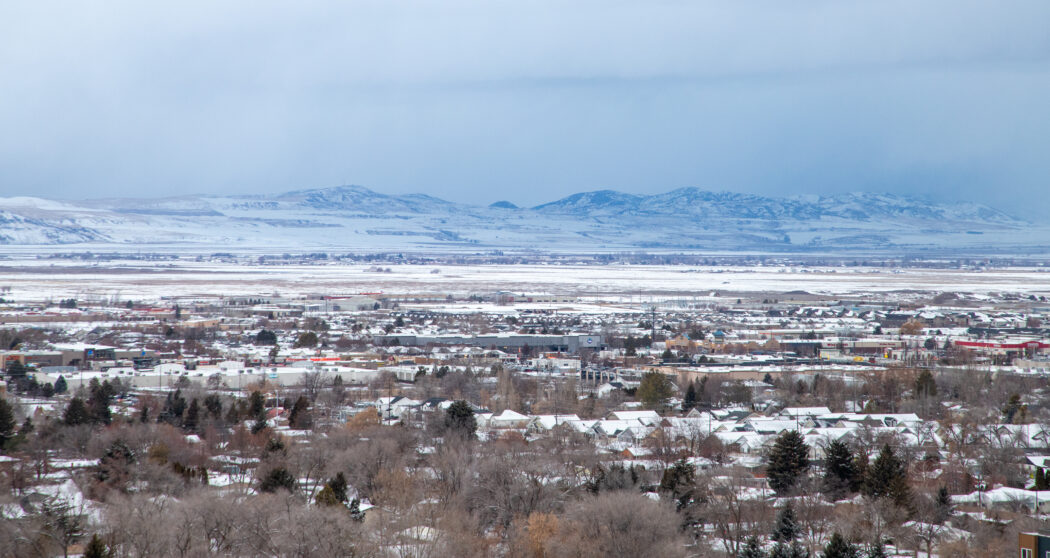Bear River Land Conservancy preserves 1000+ acres of Cache Valley land
On Oct. 23, the Bear River Land Conservancy collaborated with the Natural Resources Conservation Service to successfully preserve over 1,000 acres of Cache County’s most significant wildlife habitat and ranchlands.
This was made possible through a conservation easement. According to the National Conservation Easement Database, easements are voluntary agreements made between a land trust and a landowner to place permanent restrictions on development in order to safeguard its conservation value.
According to their website, the BRLC is a nonprofit organization that got its start in 2011 after taking over management of The Bear River. BRLC has since been working with landowners to protect natural and cultural resources found on private land.
The project, 15 years in the making, gained official funding in 2019 from sources such as the Heart of the Rockies Initiative, LeRay McAllister Working Farm and Ranch Fund and NRCS’s Agricultural Conservation Easement Program.
Gabriel Murray, operations manager at the BRLC, helped facilitate the project through fundraising and leadership efforts.
“The overarching goal of an easement is land conservation,” Murray said. “Protection of habitat, agricultural values, historical values and of cultural values.”
Protection of culture, habitat and public value of privately-owned land is also the primary purpose of the BRLC.
“What we do as a land trust is we work to preserve lands,” Murray said. “Primarily we focus on those working lands that have an agricultural value but also a wildlife habitat value.”
Matt Coombs, conservation coordinator at the BRLC, was the primary project manager behind this easement.
According to Coombs, publicly owned land can be managed when it comes to environmental value, and private ownership represents a different playing field for organizations like the BRLC.
“A lot of natural resources and wildlife habitat exist on private land,” Coombs said. “What we do is work with those private landowners to give up developmental rights on the property while still maintaining ownership. They can continue their agricultural operation and keep it in their family.”
Conservation easements are the primary tool the BRLC employs to work with landowners. Each agreement is customized to suit the needs of the owner while protecting the cultural, habitat and agricultural value of the land.
“When we were able to pick the project up and get it on a path towards success — it was a lot of that due-diligence process and working back and forth with all the partners to make sure we’re checking the boxes,” Coombs said.
The owner donated 25% of the land preserved, with the other 75% funded by outside resources.
“25% is a pretty significant contribution for the landowner,” Coombs said. “The easy, profitable thing for them to do is sell the whole property, but instead they’re making that choice. They see the importance of the land.”
Since many conservation easements rely on significant funding either from donations or from the land trust itself to compensate for the financial burden from development restrictions, Coombs said the most successful easements come from owners dedicated to preservation.
“In this case, it was very important to the landowner to see the property preserved,” Coombs said. “That’s really what it takes to get these across. It can’t just be a financial decision for them.”
Conservation easements also keep the land itself within the family. The agreement is passed down through each generation, keeping the area preserved for years to come.
“A dedicated landowner is really what made that project possible,” Murray said.
According to Coombs and Murray, the value of this land goes far beyond monetary.
“The property is used as rangeland; it’s an active agricultural operation and is part of their family ranch,” Coombs said. “It also provides significant mule deer winter habitat and habitat for other species.”
The land is also home to the Sagwitch Basin, a significant cultural site to the Northwestern band of the Shoshone nation. This conservation easement sealed decades of history that reside in this area.
“This project is unique,” Murray said. “It had this third element, which was the cultural resource value.”
After 15 years of work on preserving the area, Murray and Coombs were glad to see it come to fruition.
“We’re excited to see this project close and build on the momentum that we’ve been working to achieve over the last couple years,” Murray said. “It’s a big step forward for us as an organization.”
With this conservation easement sealed and the land safeguarded, BRLC is looking forward to creating easements in other areas across Utah via partnerships with other land trusts in places like Park City.
“We’re always asking, ‘How do we do more conservation?’” Coombs said. “‘How do we protect some of these private lands while we still have the opportunity?’ We’re lucky enough to have fairly large, intact landscapes, but if we don’t act soon and create more conservation easements, then we will miss that opportunity.”

